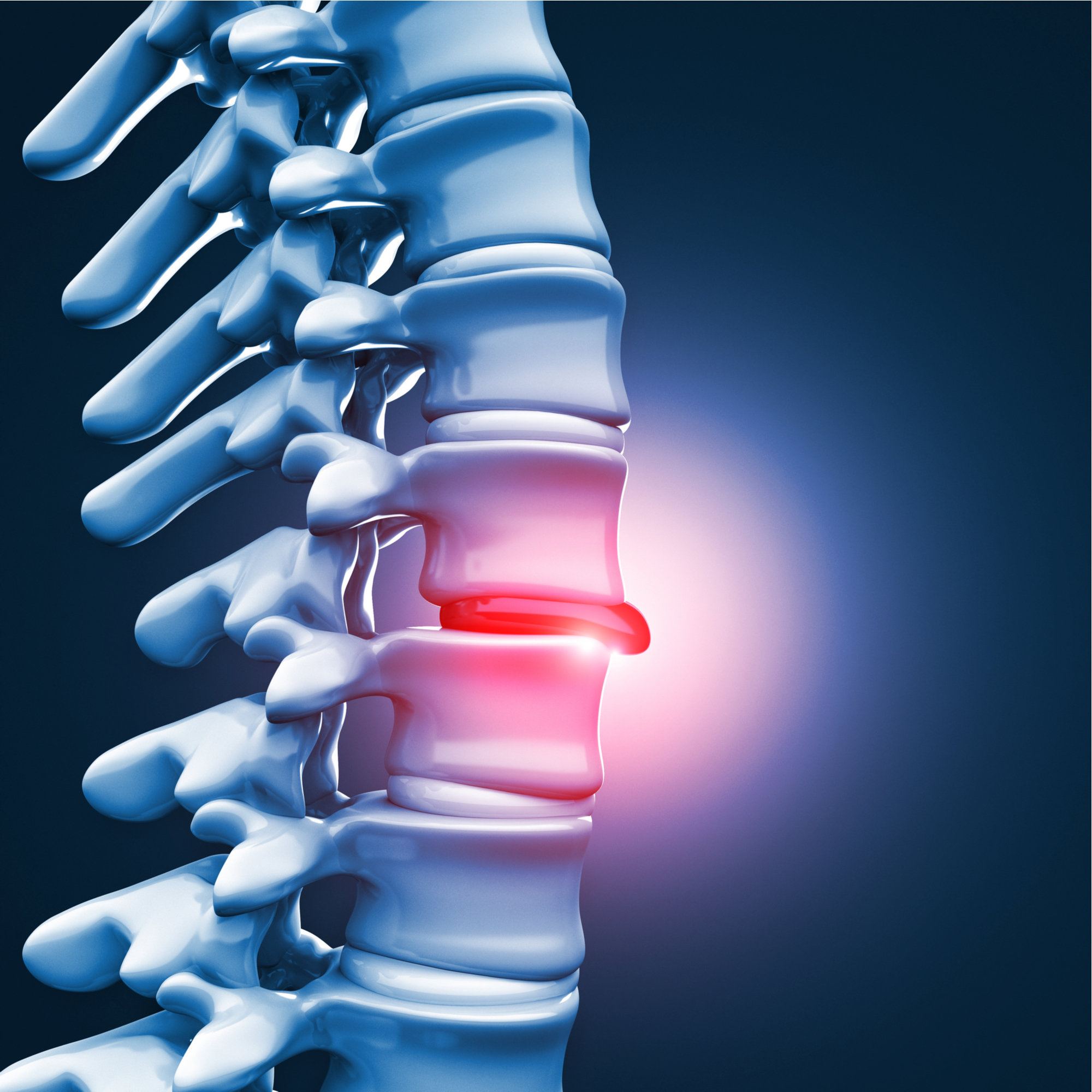Could you have a herniated disc and what are the signs, symptoms, and causes as well as treatment options? There is much confusion these days referring to the terminology, classification, and diagnosis of disc conditions, in particular, herniated discs. Even amongst doctors there is much misdiagnosed and improperly diagnosed conditions with regards to herniated discs.
Let us first understand what a intervertebral disc is and what occurs when it herniates. The disc is a circular structure of fibrocartilage that lies between adjacent vertebrae throughout the entire spinal column. Intervertebral discs have several functions but mainly act as spacers for the spinal nerves, help with shock absorption, and assist with proper spinal mechanics and movement. A disc is made up of two main types of material, an outer layer of fibrous-rubbery tissue called the annulus and an inner portion of thick viscous gel called the nucleus. Intervertebral discs make up one-fourth of the spinal columns overall length and play a major role in how well your spine and nerves function.

When a disc herniates, a portion of the inner gelatinous material of the nucleus is pushed out through a tear or crack in the outer annulus fibers. This herniated disc fragment can put pressure on an adjacent nerve causing local or radiating pain, numbness or tingling, along with inflammation. Most of the time a herniated disc will produce a high level of pain, but there are times when the pain can be minimal or not present at all. Depending on the nature and cause of the disc herniation may determine the type of pain, severity, duration and most effective treatment protocol.
What are some common causes of disc herniations and who may be more prone to experience them? Most often they are the result of a gradual, degenerative, aging-related wear and tear breakdown process. As you age, your intervertebral spinal discs start losing their fluid content, elasticity, flexibility and supportive tendencies. This “normal” breakdown process, similar to arthritis in joints, makes the discs more prone to tearing, rupture, or cracks forming and a herniation occuring. Disc herniations don’t have to always be the result of a trauma, such as the case in a car accident, slip and fall, injury or a blow to back. They can occur from repetitive stress movements (doing the same thing day in and day out over a period of time), bad postural habits, physically demanding jobs, excess body weight, and even your inherit predisposition or genetics to name but a few.
The good news is rarely does a disc herniation require surgery! Unless you’re experiencing bladder or bowel dysfunction, commonly referred to as cauda equina syndrome, or experiencing saddle anesthesia, than non surgical treatments can be highly effective! Chiropractic manipulative therapy encompasses many therapeutic treatment options that are highly successful in the treatment of disc herniations and the resolution of pain. Disc herniations typically respond very well to chiropractic treatments which may consist of spinal adjustments, ultrasound therapy, electro-muscular stimulation, cold laser therapy, flexion-distraction decompression techniques, myofascial release, trigger point therapy and kinesiology taping therapy to name but a few! Chiropractors are experts in the diagnosis and non-surgical treatment of disc herniations without the use of painful epidural spinal injections or addictive drugs that have potential harmful side effects.
In addition to the treatment of disc herniations, chiropractic care is a great option to help prevent them from occurring in the first place. Remember the old saying “an ounce of prevention is worth a pound of cure”, that is part of chiropractic philosophy. Chiropractic adjustments will help to maintain proper function of the spine, nervous system, joint biomechanics, postural alignment, and reduce muscular stress. Some things you can do on your own to help prevent a disc herniation would include exercising to strengthen the trunk muscles, stretching to increase flexibility of the spinal musculature and legs, losing and maintaining a healthy weight, as well as good postural mechanics. A chiropractor would be a great resource to aid you in the implementation of those preventative techniques as well as make personalized recommendations for other conditions and overall good general health!

